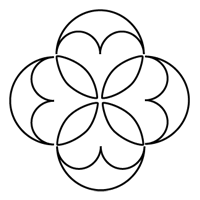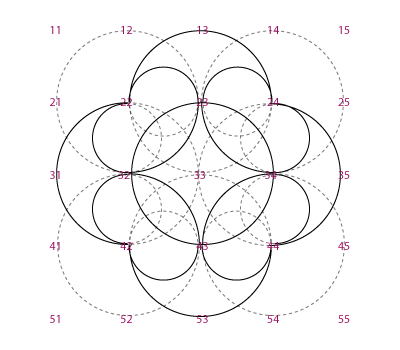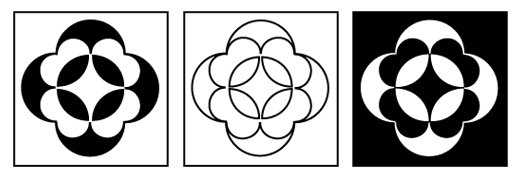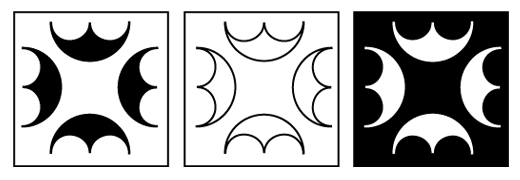In the Odeon of Herodes Atticus four different motifs consisting of several peltae appear. In the fields of an octagon pattern a rosette consisting of a cruciform and four framing peltae can be found (Fig. 47). Here the peltae possess cross-shaped middle endings.
 |
A decoration consisting of four peltae surrounding a circle has the same outline. It’s made of nine overlapping circles (Fig. 48-49). In the centre is a concave rectangle containing a square or “diamond” with a staircase border.
 |
 |
A group of two lying and two standing peltae appear in just one section of the design.
Somewhat more frequently in octagons a motif containing four peltae with their backs to one another can be found. These peltae form a concave field at their centre that is often decorated with a small rectangle (Fig. 50). The middle pelta tip is often embellished with a small cross.
 |
This motif was used as decoration in square-shaped corners in Kenchreai. The peltae with their thickened endings touch the inner frame.
In Olympia the motif also appears in a square-shaped corner of a swastika meander pattern. The peltae have pointed endings, are alternatively green or red and surrounded by a white contour line. On the same mosaic are two more motifs made up of four peltae. Both the form and layout of the peltae would appear to be unique in Greece. It may have been an invention by the artist. A circle with a cruciform is contained within a square-shaped area of the meander frame. In each of the trapezes between the cruciform “leaves” is an outward-facing pelta. Its apex is greatly thickened, while the outer endings curve inwards (mushroom form). In another area four peltae with triangular middle endings face one another. Again here the handles curve inwards and form a small volute.